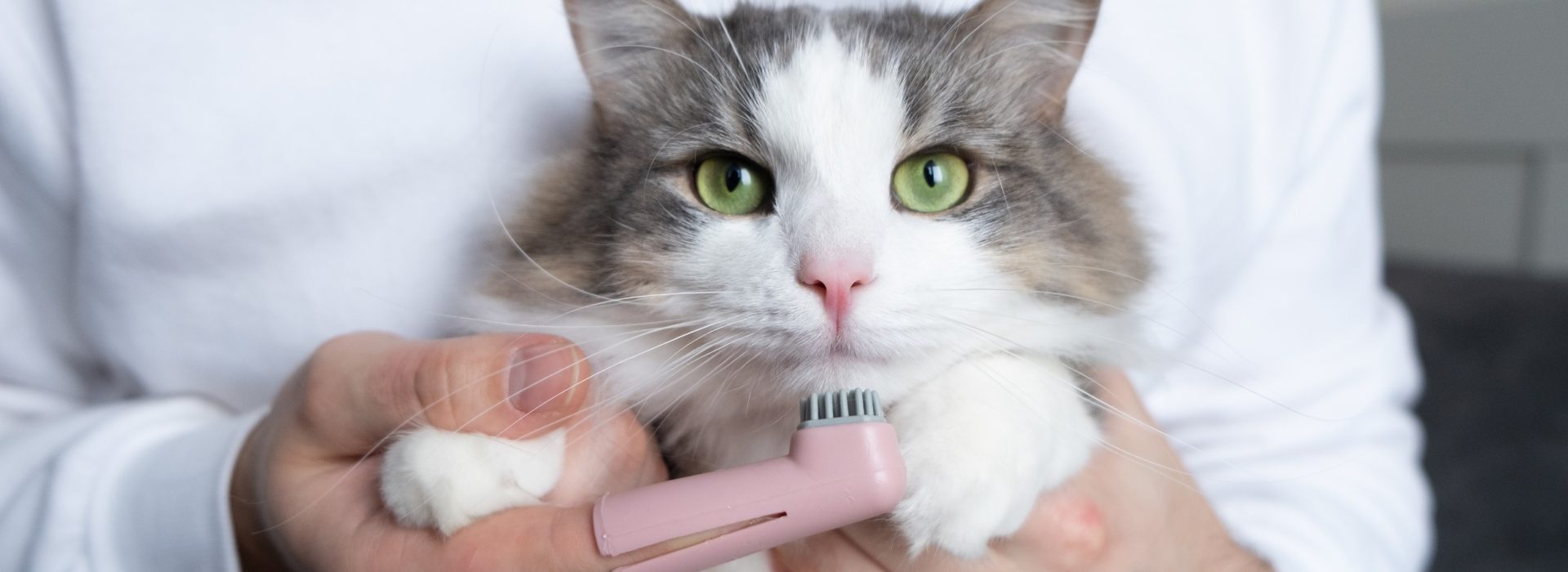Dental care is a very important aspect of a cat’s overall health. Dental disease is one of the most common issues that we see and untreated dental disease can lead to other serious health problems. Bacteria from the mouth can get into the bloodstream and affect other organs including the heart, lungs, kidneys and liver. As with humans, dental disease can be painful, so it is important to bring your cat in for a regular dental check-up.
What is involved in a dental cleaning procedure?
Dental cleanings are always done under general anesthetic and so we follow the same preparation as with any other surgery. We will do pre-anesthetic blood work, place an IV catheter for IV fluids, then sedate them, before placing an endotracheal tube for the gas anesthetic. Once under anesthetic, a full dental examination will be done by evaluating each tooth and charting on a dental chart. The teeth will then be scaled and polished just like if you were at the dentist. Any other concerns are noted as well as, any extractions that would have been necessary.
What are signs of dental problems in cats?
Some signs of dental problems can include bad breath, drooling, changes in eating or chewing habits and pawing at the face. You may also notice in the mouth brown or yellow buildup (tartar) on the teeth, redness, swelling and bleeding of the gums. If you notice any of these concerns, please call us to book an appointment with a veterinarian for a dental exam.
Are some feline breeds more susceptible than others?
Every cat is different in how susceptible they are to having dental disease, but there are certain breeds that are more prone such as Abyssinians, Oriental breeds and Persians.
What is feline tooth resorption?
Cats do not get cavities like humans but get feline tooth resorption which can be very painful for cats. A tooth affected by this condition will start to break down, usually starting at the gum line and will continue to the root and crown of the tooth. The reason why feline tooth resorption happens is not fully known and the only treatment is to extract the teeth affected by this condition, as once it starts it can not be reversed.




